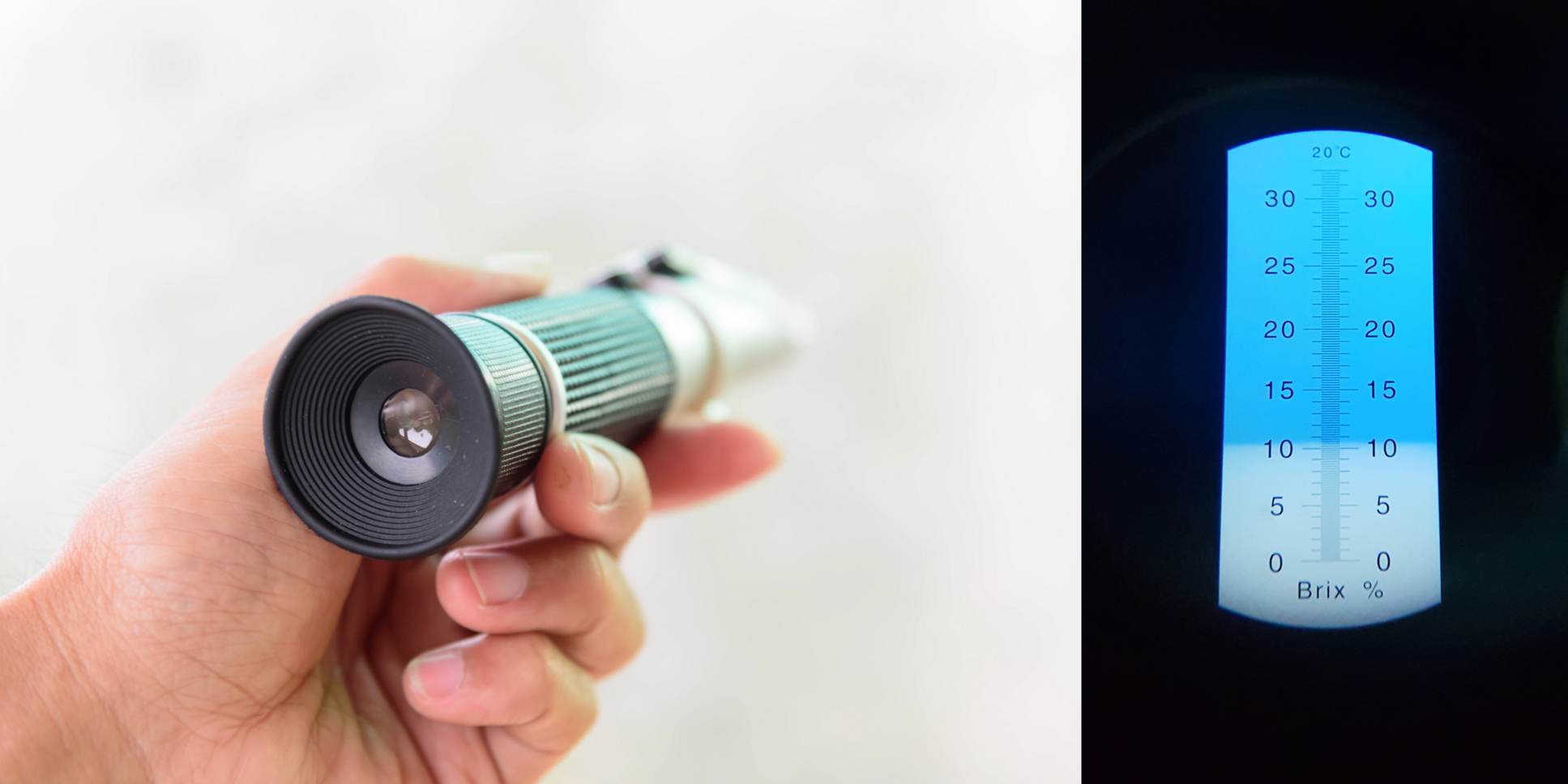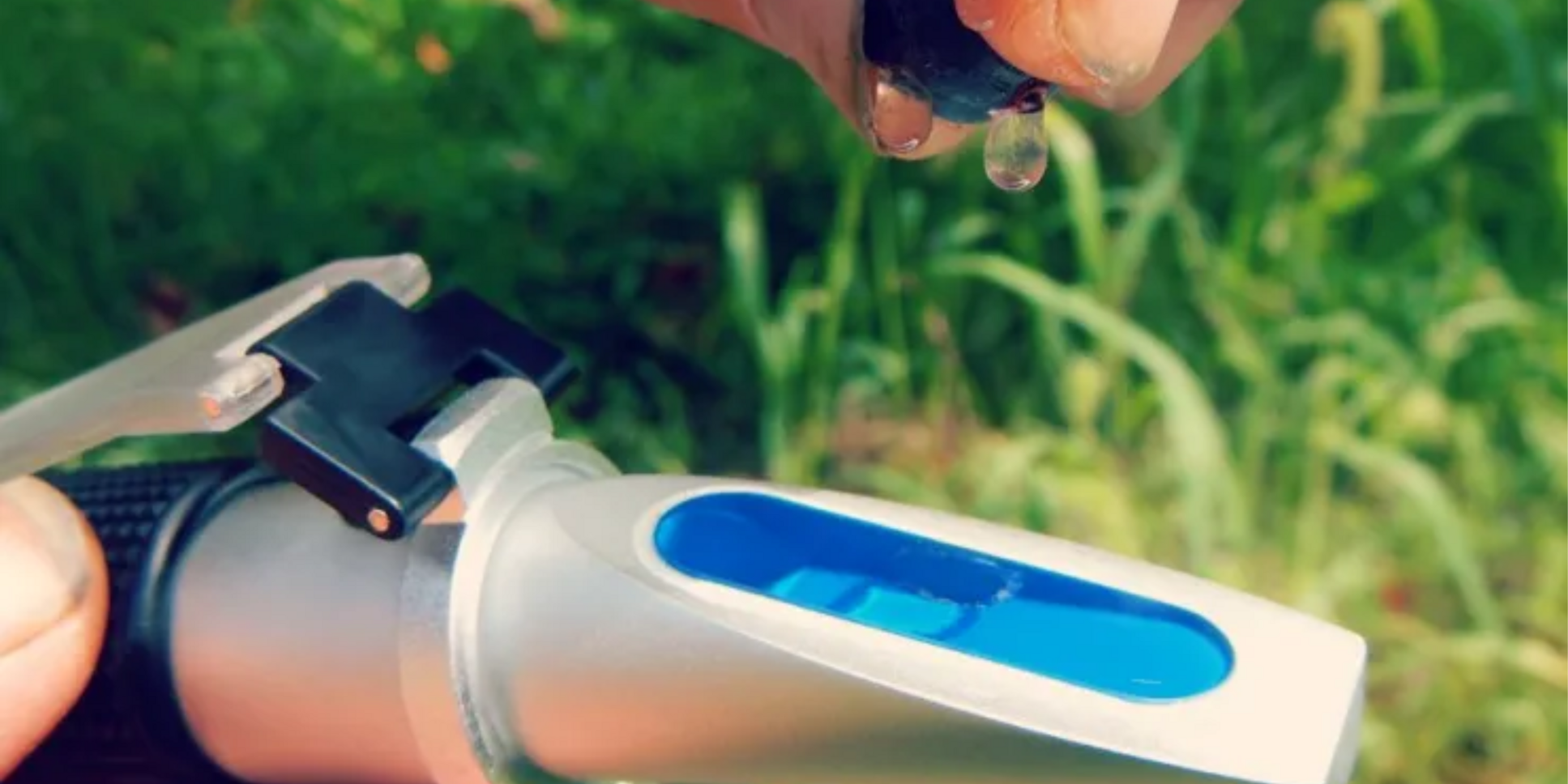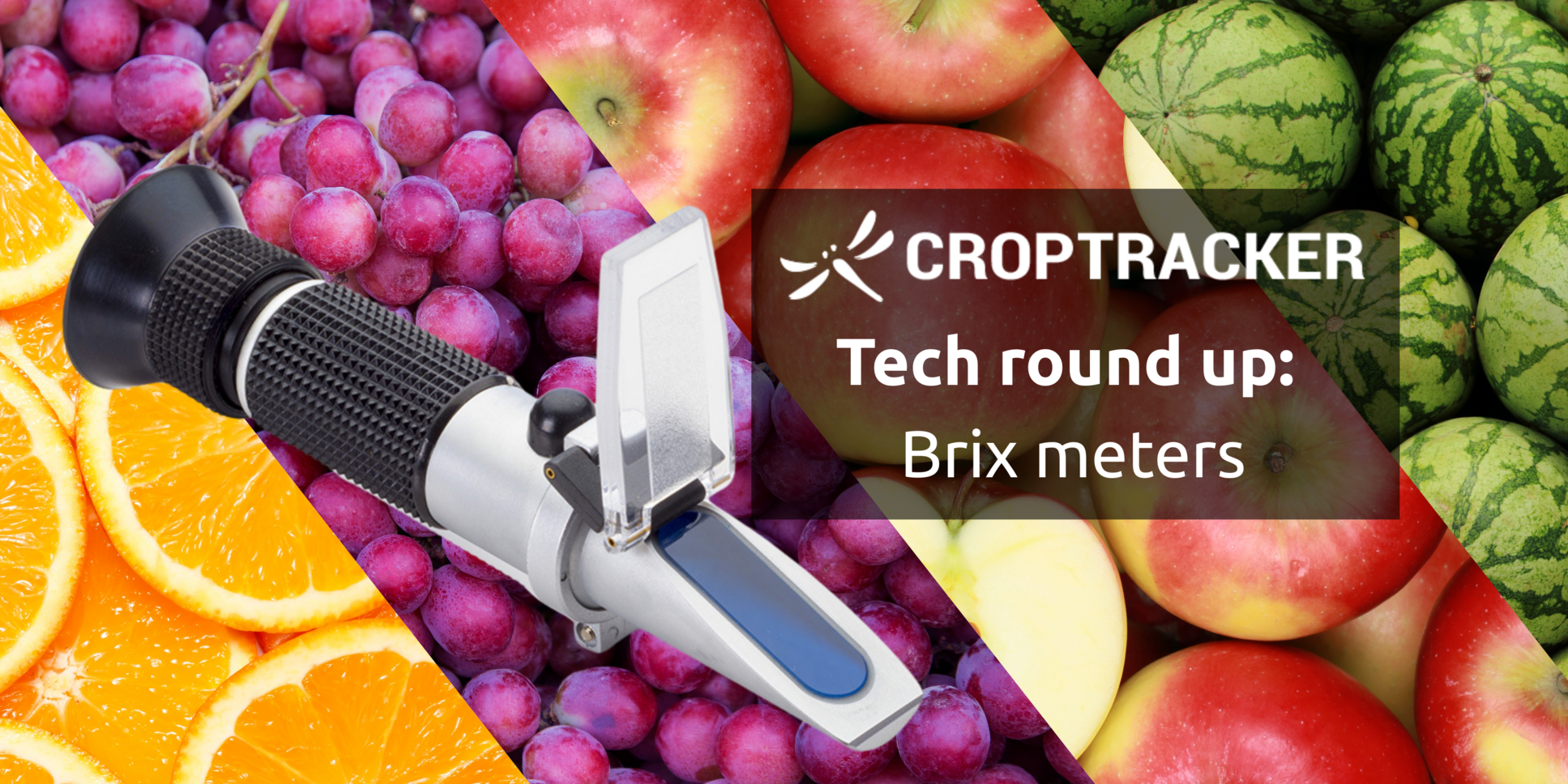Brix degree measuring is an important quality metric for specialty crop growers and horticulture. Brix° levels inform both harvest planning, storage, packing and sales decision making. The accuracy and utility of field Brix readings depend significantly on managing both environmental inputs and sampling consistency. As a result, ensuring the testing tools work well and sampling processes and reporting are standardized is vital for making properly informed decisions. In this article we detail the factors influencing Brix test results, explain refractometer model options and have compared several popular Brix refractometers popular with fresh produce growers and packers.
Variables influencing field Brix readings and management strategies
Brix measurement is not merely a recommended best practice; it is established as a mandatory regulatory standard for internal quality grading. Government agencies and industry associations set official minimum soluble solid thresholds to guarantee a baseline quality level for consumers. To sell produce to certain customers and into specific markets, it's essential to ensure that equipment and testing processes can accurately assess changes in Brix levels throughout the pre- and post-harvest stages. This guarantees the produce meets required quality standards.

Environmental and biological influences
Baseline Brix° levels are fundamentally shaped by biological factors, making varietal selection one of the most direct and important management methods for controlling final crop quality. Beyond genetics, external factors strongly influence soluble solids production. Temperature, light exposure, and moisture status interact to set the rate of sugar creation in the plant. Furthermore, stressful growing conditions, such as drought or inclement weather, can alter how plants store sugars, potentially affecting measurement readings.
Nutrient management plays a significant role in Brix development. Studies indicate that increased electrical conductivity (EC) or salinity levels in irrigation water can increase Brix readings in greenhouse-grown crops like tomatoes and peppers. Nitrogen (N) availability also influences Brix, albeit in a complex and indirect manner tied to its impact on photosynthetic efficiency.
Since Brix° levels are demonstrably sensitive to these nutrient and environmental inputs, consistent monitoring provides objective, immediate feedback on the efficacy of a farm’s fertility program. If a known-sweet variety yields consistently low Brix values, it suggests a deficiency or imbalance in the nutrient or irrigation regimen, allowing for precision adjustments before visual symptoms appear.
Mitigating measurement variability
The reliability of Brix data gathered in the field hinges on rigorous sampling consistency. For example, best practices for pre-harvest sampling require quality control personnel to select samples at regular intervals, choosing fruit of similar age and position on the plant when comparing throughout a growing area. Crucially, testing must occur at a consistent time of day, and samples should be representative of the growing area to account for potential variability in soil type, moisture, and fertility.
A standard procedure is necessary because a lack of consistency introduces significant human error, diminishing the statistical reliability of the meter. Since sugar accumulation and plant water status are temporary factors that change throughout the day, ignoring standardized operating procedures compromises the integrity of the data collected.

Refractometer technology
Brix testing is most commonly performed using a refractometer, a tool that measures how much light bends (refracts) when passing through the sample liquid—a direct proxy for the concentration of soluble solids. The selection between analog (manual) and digital models involves balancing cost, precision, speed, and durability.
Manual (Analog) Refractometers
These devices measure light refraction using internal optical prisms, where the user reads the result directly on an internal scale through an eyepiece. They are inexpensive and functional for basic field checks, often featuring simple-to-read scales. However, manual refractometers are generally considered "slightly less accurate than digital ones" due to lower resolution and reliance on subjective human interpretation.
Digital Refractometers
These instruments eliminate subjective reading errors by instantaneously measuring light refraction and displaying the result on a digital screen. Digital units offer superior measurement speed (often ≤ 3 seconds response time) and higher resolution, typically 0.1°Brix.
Cost, Accuracy, and Extended Range Capabilities
The choice between analog and digital often involves a trade-off in cost versus precision and reliability. Low-cost analog units, such as the Agtec Portable Refractometers (0-32 Brix) , are available at an aggressive price point (approximately $67.99). However, these typically offer a resolution of 0.2°Brix.
For growers aiming to meet tight regulatory standards or managing large lots where precision is critical, the investment in professional digital meters, priced significantly higher, is justified. Digital instruments offer high resolution (down to 0.1°Brix) and minimize the risk of measurement ambiguity, which is critical when a deviation of 0.1°Brix could determine compliance with a mandatory USDA minimum threshold.
Digital devices built with robust, shock-resistant housing and IP67 ratings, like the Reichert Rhino, promise a lower total cost of ownership over time by withstanding the physical demands of agricultural operations. Digital technology is also essential for applications requiring extended measurement ranges. Standard analog models typically max out at 32°Brix. For specialty crops, concentrates, or high-sugar solutions (such as jams or syrups), an extended range is necessary. Professional digital refractometers demonstrate superior capability here, with models reaching 0–50% Brix (Reichert Rhino-Brix 50) , 0–53% Brix (Turoni Digital 53007) , or 0–55% Brix (DeltaTrak Digital Meter).

Top Portable Brix Meters
To help ensure accuracy in the field, where the environment is not consistent, we looked for models with high durability ratings (IP Rating) and Automatic Temperature Compensation (ATC)
Automatic Temperature Compensation (ATC)
Refractive index readings fluctuate significantly with temperature. ATC is a critical feature that automatically corrects the reading to the standard reference temperature (typically 20°C or 30°C) without the need for manual calculations. Most modern portable units, including the REED R9500 and Turoni's models, include ATC, often compensating within an operating range of 10°C to 30°C.
Durability and Environmental Protection (IP Rating)
Field environments require rugged equipment. IP ratings define a device's protection against dust and water ingress. Many professional digital units, such as the DeltaTrak Digital Meter carry an IP65 rating (dustproof and protected against water jets). For maximum field resilience, the Reichert Rhino-Brix 50 features a sealed polycarbonate housing and eyepiece, achieving a superior IP67 rating, indicating it is dust-tight and protected against temporary immersion.
Analog/Manual Models
Manual refractometers are the workhorse for basic field maturity checks. They are defined by their low cost, portability, and reliable mechanical operation. They utilize internal optical prisms and are typically limited to a range of 0−32% Brix, which is adequate for most fresh fruits and vegetables. All the models below have at least a 0−32 Brix % range.
| Model | Features | ATC? | ~ Price (USD) |
|---|---|---|---|
| Agtec Portable (RFCT-032) |
|
Yes 10°-30°C |
~ $67.99 |
| Turoni Code 53000C |
|
Yes | ~ $150.00 |
| REED R9500 |
|
Yes 10°-30°C |
~ $140.00 |
| Triplett RFT32 |
|
Yes 10°-30°C |
~ $125.00 |
| Reichart Rhino Brix 50 Refractometer |
|
Yes | ~ $275.00 |
| Lee Valley Sugar Tester |
|
Unlisted | ~ $80.00 |
Digital Models
Digital refractometers are necessary for high-volume operations, processing, or when regulations require extremely high measurement precision (0.1° Brix) and extended range capability for concentrates. They minimize human error and provide fast, clear digital results.
| Model | Features | ATC? | IP Rating | ~ Price (USD) |
|---|---|---|---|---|
| Reichart Refractix Digital Refractometer |
|
Yes 10°-40°C |
Unlisted - protective coating | ~ $3000.00 |
| Turoni Digital refractometer 53007 |
|
Yes 10°-60°C |
Unlisted - water resistant (splash proof) | Unlisted |
| DeltaTrak Digital Brix Meter Sugar Refractometer 12221 |
|
Yes 10°-50°C |
IP65 | ~ $150.00 |
| Metter Toledo Handheld Refractometer MyBrix |
|
Yes 5°-60°C |
IP65 | ~ $600.00 |
Digitizing Quality Control Records
Brix is a fundamental quality control metric used across all stages of the supply chain—pre-harvest, harvest indices, and post-harvest grading—to ensure product safety, freshness, and adherence to market standards. While analog meters necessitate error-prone manual transcription, digital meters expedite data collection, offering instant digital displays that streamline the recording process for QC technicians. A single Brix reading is merely a static number. However, when this QC data (Brix value, date, time) is logged and associated with specific growing locations or inventory data, it becomes dynamic, actionable information. Ensuring workflows for Brix testing include digitizing, analyzing and sharing data is important to consider when choosing a testing device. If your testing volume is high, automatically data pulling from a digital tester may be worth it. If you already have a digitized QC collection process, an analog reader and logging results on a phone or tablet may work best.


